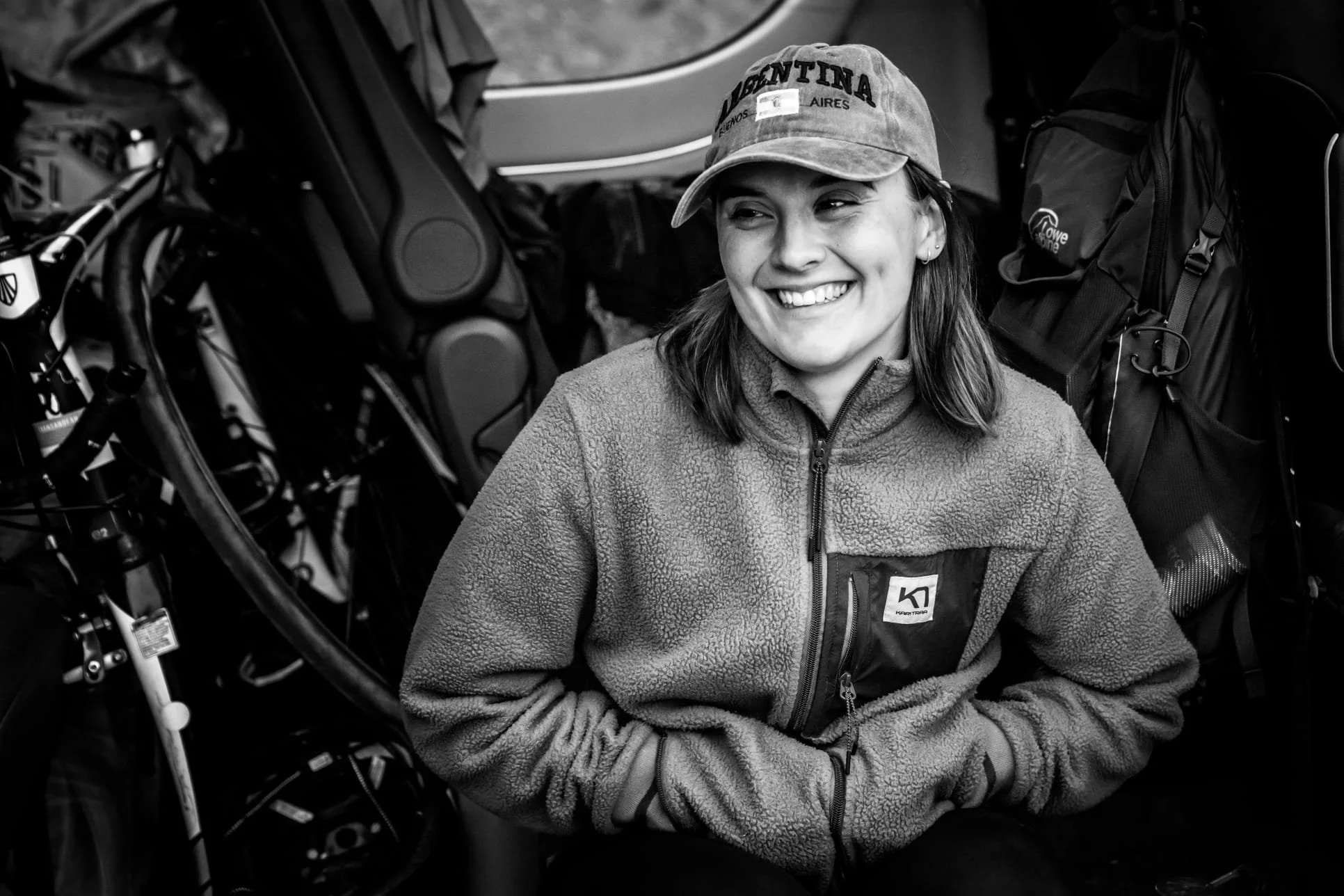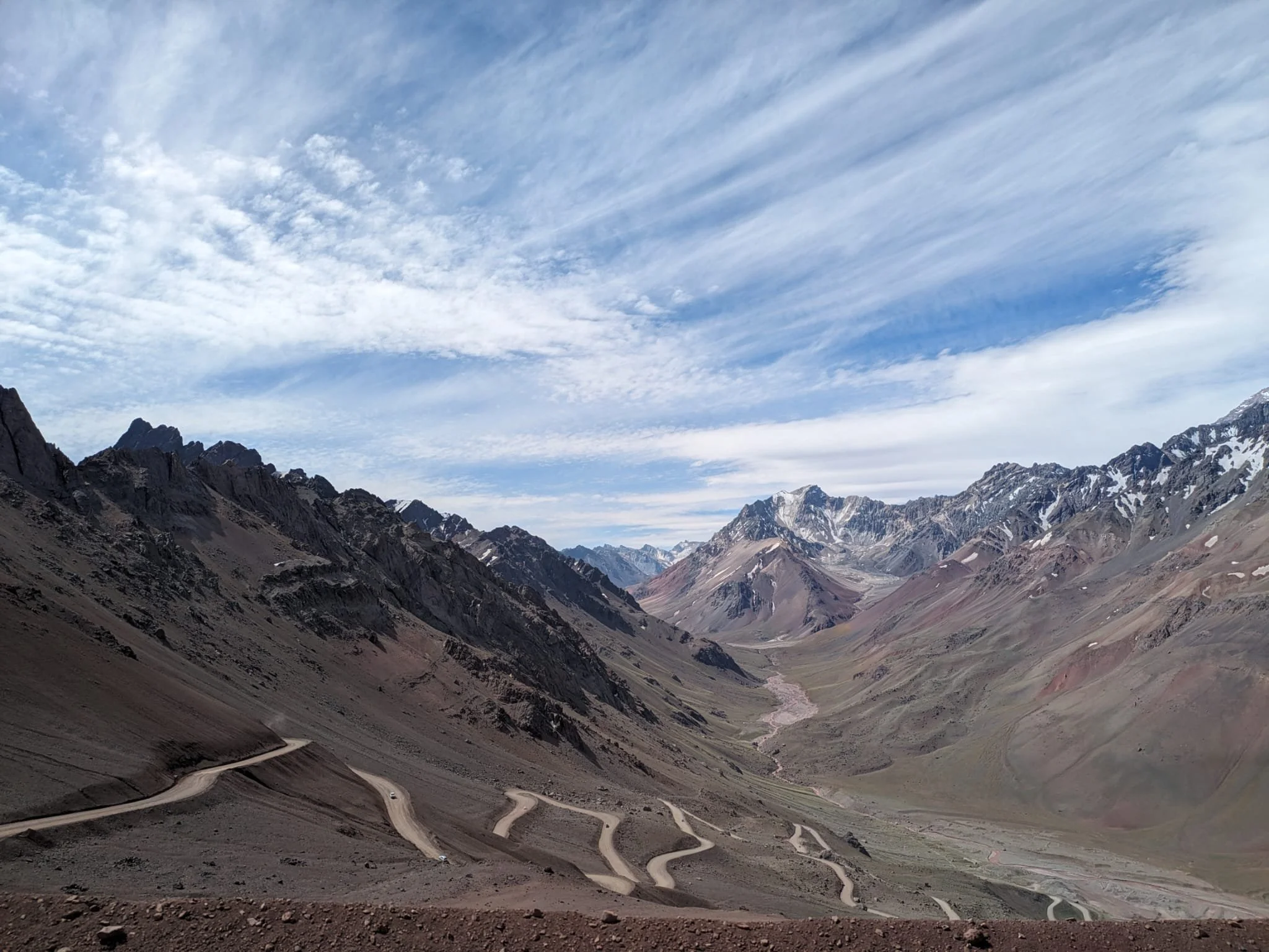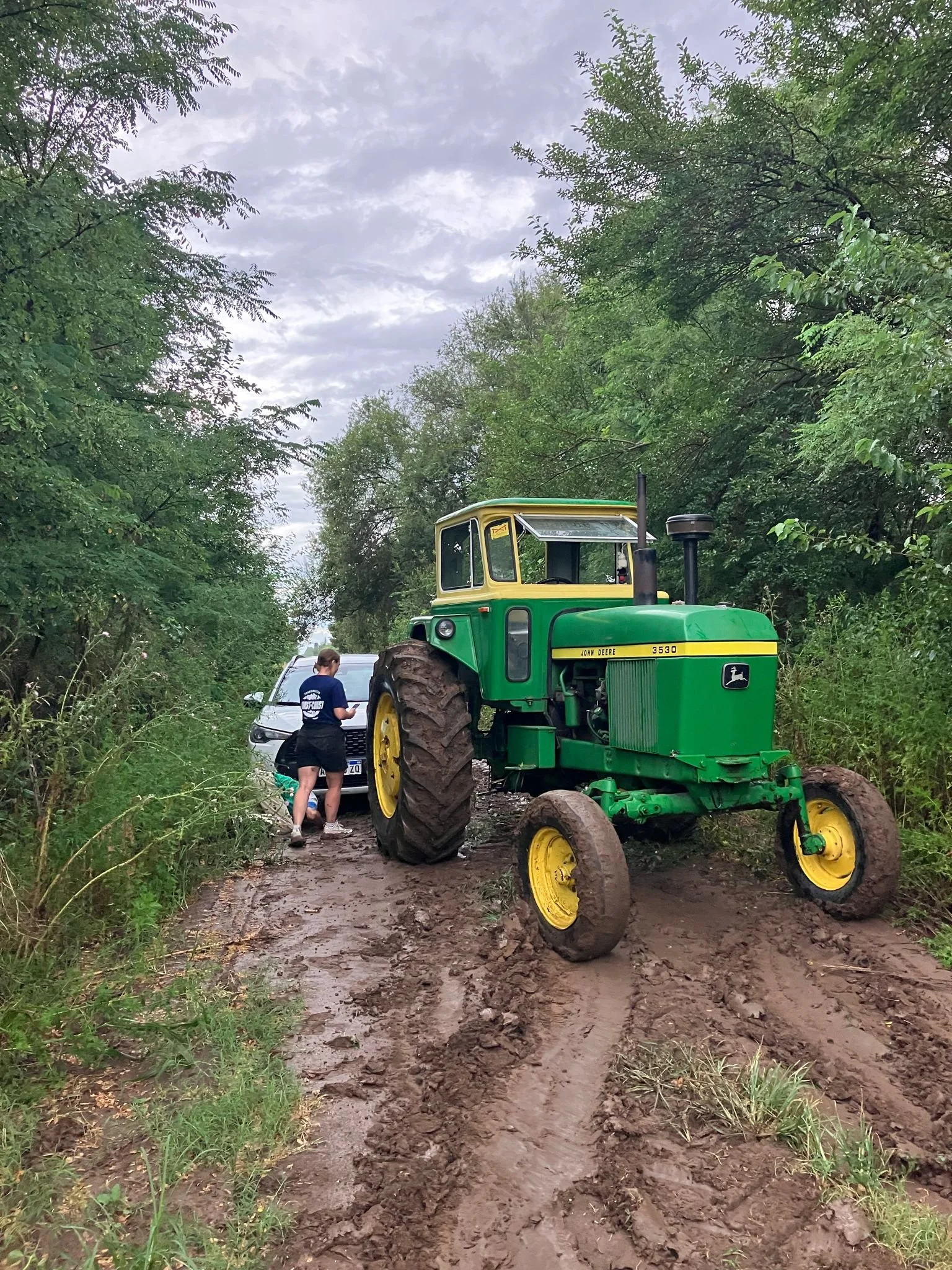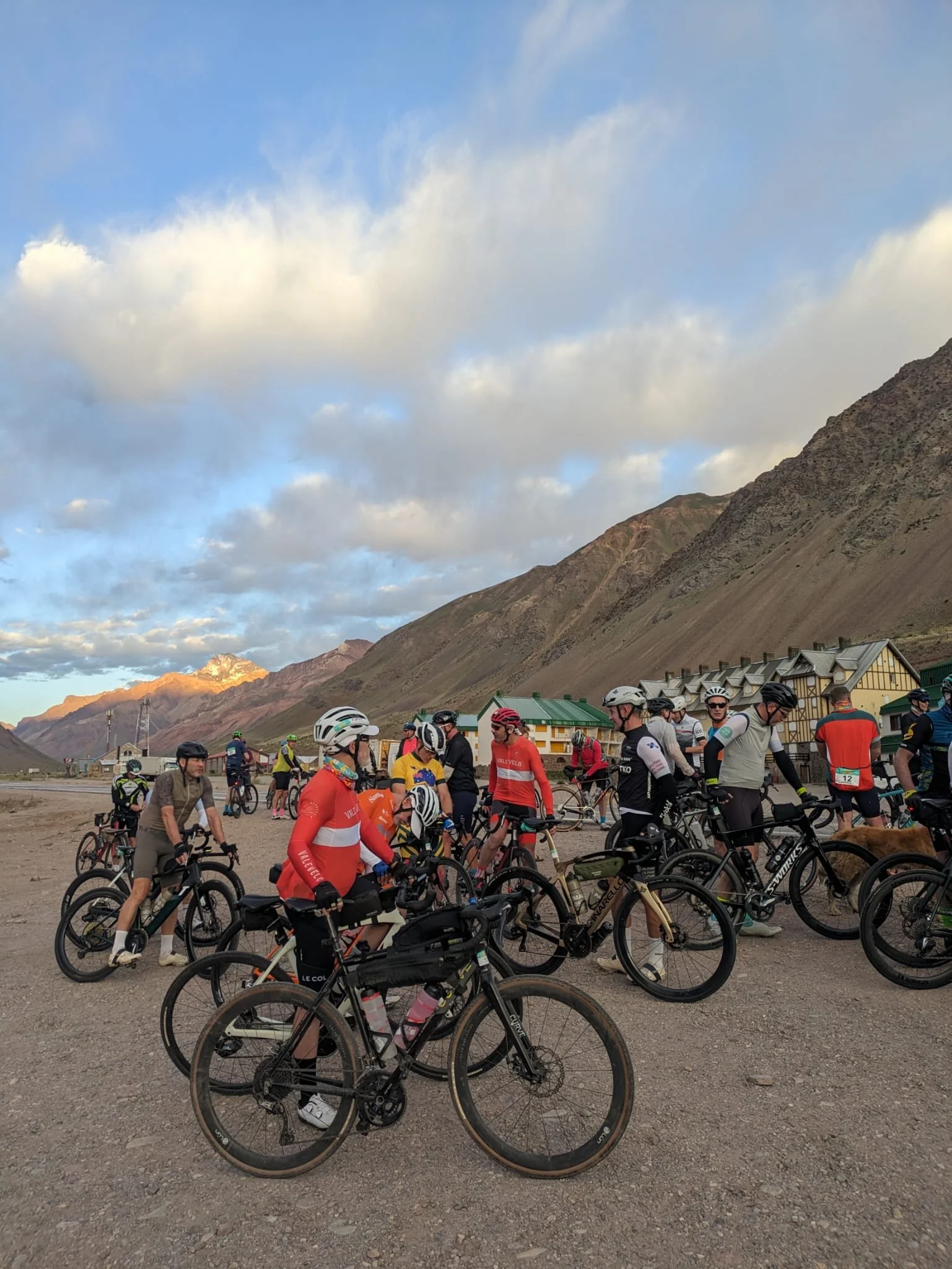TransAndean Coast to Coast | Peaks and Pedals
A Conversation with the Expedition Doctor of the Rat Race TransAndean Coast-to-Coast Cycling Event 2024
Dr. Robyn Sercombe (@robyn.sercombe)
For those of us who only dream of extreme adventures, here at TrailMed, we are lucky to work with some industry leaders in expeditions and ultra events. Recently, we sat down for a catch-up conversation with one of our fantastic expedition doctors, Dr Robyn Sercombe, who TrailMed deployed to support our adventure partner, Rat Race, on the TransAndean Coast to Coast cycling event. This journey consists of a gruelling 1060m (1700km) cycle across some of Chile and Argentina's toughest terrain over 13 days, including ascending from sea level to 3823m and back down again.
Throughout our conversation, Dr Sercombe shared invaluable insights and practical tips for tackling participants' challenges. From the common issues of saddle sores and heat-related illnesses to the risks posed by high-altitude climbs and potential trauma, Dr Sercombe's experiences provided a wealth of knowledge for anyone looking to embark on a similar adventure or who is interested in pursuing a career in remote or expedition medicine. Read on for a detailed account of keeping cyclists healthy and safe on such a demanding expedition.
“Serious altitude illness does not come out of nowhere; riders were encouraged to listen to their bodies and not ignore warning signs. As the medic posted at the top for the day, I probably had the highest risk and found myself with a cracking headache once the day was complete…. a good reminder to look after ourselves on expedition!”
It was a long slog up here! Less-than-perfect roads, erratic drivers, fluctuating temperatures and 30-40 determined cyclists on each trip - queue a busy day as an expedition medic!
TrailMed Supporting Adventure
So, Robyn, it’s great to have you back in the UK after your trip. Thanks for taking the time to drop by TrailMed HQ to chat today.
We know from supporting cycling adventures as part of UK event medical cover that saddle sores are common for cyclists. During the incredibly challenging conditions of the Transandean Coast to Coast event, could you share your experiences supporting cyclists with this challenge and any top tips for anyone interested in attempting this kind of event?
Dr. Robyn Sercombe
No problem at all. I had a great time, and it was awesome to work internationally with Rat Race after crewing for UK events -– thanks for
deploying me!
So yes, saddle sores, there was a LOT of them! Heat, sweat, friction and pressure whilst cycling is the perfect environment for skin issues. Prevention here is key.
Good personal hygiene is essential, so impress upon participants the importance of washing themselves and their kit daily – with clean shorts every morning. In the evening, change into looser clothes and leave your skin uncovered if possible. Most cyclists apply a lubricating cream (chamois) or Vaseline frequently throughout the day to reduce friction to the skin.
Much like looking after a hotspot before a blister develops, caring for ‘at risk’ skin is important otherwise, it can become broken and introduces an infection risk. My go-to here is Sudocrem (commonly used for nappy rash) or any zinc oxide cream. It’s cheap and can help soothe a multitude of skin complaints, from sunburn to bites, and will always be found in my personal kit. A layer of K tape directly to vulnerable skin seemed to work best in hot conditions. For riders unlucky enough to develop open sores, using a layer of antibiotic ointment with a thin strip of Jelonet-type dressing with K tape over the top was my technique. More bulky dressings caused even more issues under tight Lycra. Ultimately, time out of the saddle might be needed for recovery.
TrailMed Supporting Adventure
While dealing with saddle sores is crucial, we can't ignore the trauma risks on such a challenging 1700km ride. Can you share some of the injuries cyclists faced during the Transandean event and how you handled these challenges?
Dr. Robyn Sercombe
The journey included very long days on some of Argentina’s main highways and potential for high-stakes trauma (more on this later). Heavy winds and flash flooding led to the difficult decision to cancel one day of the event. Whilst we saw a fractured clavicle, ribs and head injuries requiring CT – most injuries were minor.
The cyclists among you will have almost certainly experienced an inability to unclip from cleats when exhausted and coming to a stop - with a resulting comedy fall to the ground! These were the most common injuries seen, low impact abrasions to knees and hands or from pointer parts of the bike (a chainring leaves an impression set of indentations on the back of a calf!)
In terms of remote medicine, a squeezed water bottle can provide high flow for an initial wound clean. Road rash is a high risk of Staph A infection, so for gnarlier-looking road rash, don’t be afraid to get stuck in a sterile surgical scrub brush with iodine. As well as cycling-related MSK issues such as ‘cyclists palsy’ (ulnar nerve compression at the wrist), we also saw acute medical complaints such as SVT, BPPV and angina.
Heavy winds and flash flooding resulted in the tough decision to cancel one of the days and the need to recruit some help from local farmers.
TrailMed Supporting Adventure
Dawn is breaking and the cyclists are ready for an early start!
Handling trauma on the road sounds intense! But with the high temperatures on the ride, staying hydrated and sunburn-free must have been quite the challenge. How did you manage the heat and hydration issues among the participants?
Dr. Robyn Sercombe
With average temperatures often soaring into the 40s, we saw plenty of sunburn and heat-related illness. Lack of adequate hydration or electrolyte replacement will lead to poor performance and can have serious consequences.
Each cyclist will have different requirements (check out TrailMed’s Personalised Hydration Plan if you want to explore your unique hydration needs). Still, they were generally encouraged to drink 4-6l daily to pass clear/straw-coloured urine regularly.
Encouraging open conversations about bladder/bowels/hygiene should be started early in your race briefings on any expedition. It wasn’t long before participants checked in with each other about this to avoid facing the wrath of “the doc who’s obsessed with our wee”.
As an expedition medic, you are also responsible for assessing the risk for your participants – how hot is too hot? You may have heard of the Wet Bulb Globe Temperature (a measure of temperature, humidity, wind speed, and direct sunlight), which can be used during predictable environments where humans will be unable to reduce their body temperatures by sweating.
Fortunately, in Argentina, the humidity was low. Cyclists are subjected to heat radiating from the tarmac, but they also benefit from increased airflow when moving, compared to participants walking or running in similar hot environments. We needed to make dynamic daily assessments based on the rider’s symptoms and performance, suggesting additional water stops, early starts or boosting slower riders who have spent more hours in the sun and shuttling them to the finish line if required.
Also, suncream (lots) seems obvious, but exhausted riders must be reminded. Many riders used long-sleeved UV layers for their upper body or wore buffs around their necks, which could be regularly soaked with water or filled with ice at pit stops. In daily evening medical briefings, riders were reminded of the warning signs of heat illness: headache, fatigue, cramping, thirst, and dizziness. For those suffering from these symptoms, the treatment is: stop, shade, strip, soak and get onto an airconditioned bus for oral rehydration + electrolytes.
Expedition medics might also need to make unpopular decisions to cancel or change events in response to unexpected weather conditions, as we needed to do on one day due to the risks posed to our riders by heavy winds and flash flooding.
The statue of Christ the Redeemer of the Andes at 3832m: A symbol of peace between Chile and Argentina for over 100 years.
TrailMed Supporting Adventure
Dealing with heat and hydration must've been tough, but you also had to tackle altitude challenges during the ride. Can you tell us about the most demanding day of the journey and how you managed the effects of altitude on the cyclists?
Dr. Robyn Sercombe
The most challenging riding day was gruelling gravel road zigzagging the Uspallata gravel path to Christ the Redeemer statue at 3832m (see first picture above). Whilst the effects of altitude can certainly be experienced at those heights, and could be intensified by the fact that riders ascend much quicker than hikers, they also spent a correspondingly short amount of time at this altitude, and all riders completed the climb with quick evacuation options by vehicle.
Serious altitude illness does not come out of nowhere; riders were encouraged to listen to their bodies and not ignore warning signs. As the medic posted at the top for the day, I probably had the highest risk and found myself with a cracking headache once the day was complete…. a good reminder to look after ourselves on expedition!
TrailMed Supporting Adventure
The altitude challenges sound intense! But it seems like you managed them well. As we wrap up, can you share more about the overall adventure? How did you keep the morale high, and what were some of the memorable moments from your month-long journey?
Dr. Robyn Sercombe
This was an epic month-long adventure, with back-to-back trips supporting two separate groups of riders. Looking after the morale and wellbeing of the crew is also an essential part of your medic role. Your role as an event medic can be expansive - I was responsible for the lunch stop, making over 40 sandwiches! The support you can offer with motivational tunes (and dubious dance moves), a huge smile, and lots of encouragement can be invaluable to participants.
The trip was the perfect opportunity to practise my rusty school Spanish with the local crew, enjoy a delicious asado steak, relax in hot springs, explore the back streets of Buenos Aires and check out the local wildlife (including huge Andean condors and an armadillo).
¡Hasta luego Sudamérica!
TrailMed Supporting Adventure
If you're inspired by Dr Robyn Sercombe’s journey and are considering a career as an expedition medic, organising an event or expedition needing medical cover, or seeking tailored support for your next big adventure, TrailMed is here to help. We are passionate about supporting adventurous spirits and ensuring your journey is as safe and enjoyable as possible.
Click through the carousel below for more photos from the Trans Andean Coast to Coast event and experience the thrill of adventure with TrailMed!






















